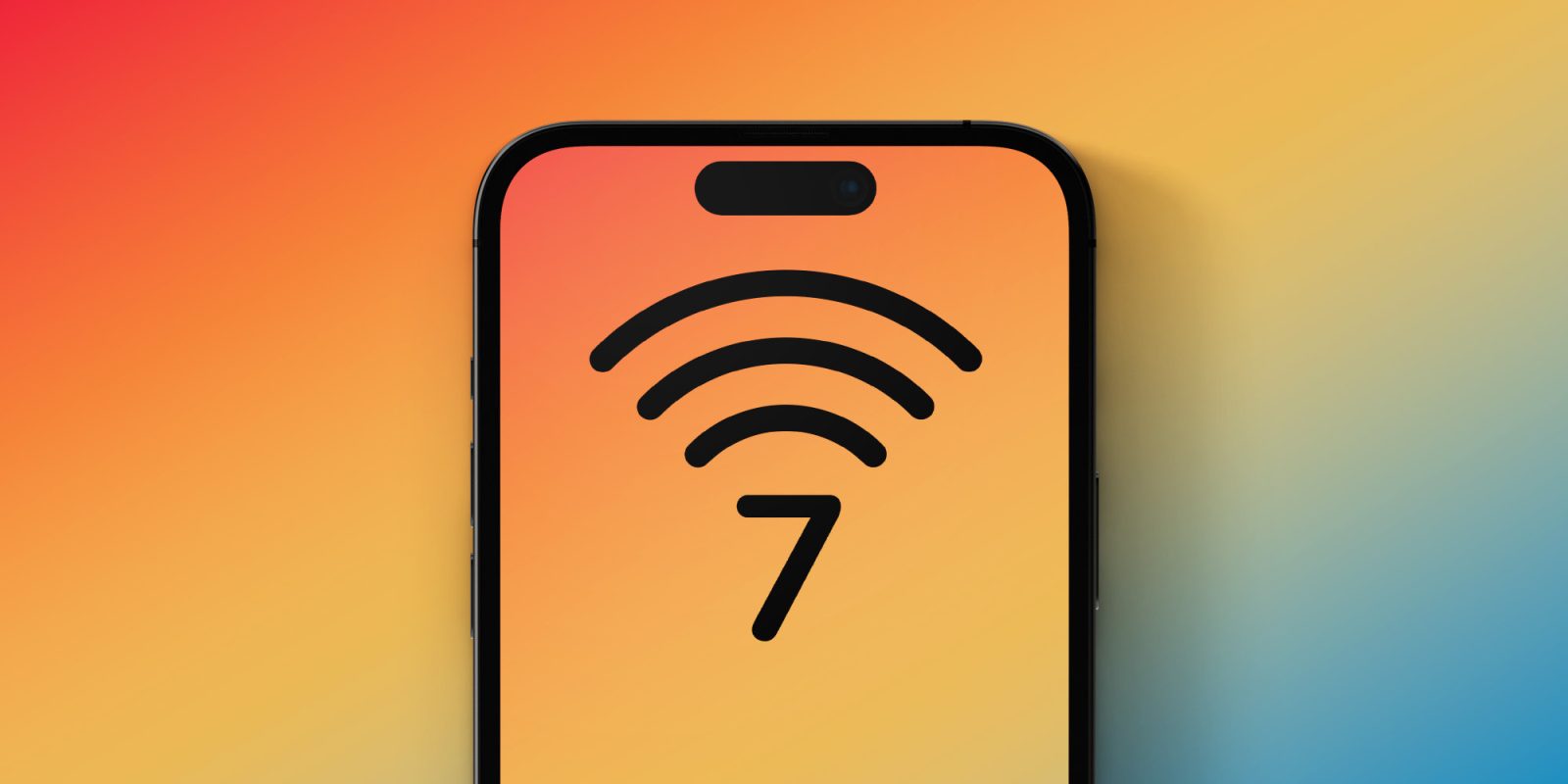
Reliable analyst Ming-Chi Kuo is reporting that Apple is planning to adopt Wi-Fi 7 support on the iPhone as soon as next year. This could bring major improvements not only to speed and reliability, but also for the ability for different Wi-Fi 7 devices to interact with one another.
What does Wi-Fi 7 offer?
One of the biggest changes in Wi-Fi 7 is a dramatic increase in the maximum data throughput speeds. According to the Wi-Fi Alliance, Wi-Fi could offer peak data rates of more than 40Gbps, making it up to four times faster than Wi-Fi 6 And Wi-Fi 6E, and nearly six times faster than Wi-Fi 5.
In addition to those impressively fast speeds, Wi-Fi 7 will also introduce something called Multi-Link Operation technology. This will allow devices to simultaneously send and receive data over multiple radio bands. One of the biggest changes is an increase in the number of multi-user MIMO (multi-user, multiple input, multiple output) streams, doubling from eight to 16.
The best way to explain these changes without getting too technical is that they dramatically reduce latency.
As the Wi-Fi Alliance itself explains, this is a key change to accommodate the ever-increasing data demands of technology today – including augmented reality and virtual reality. These types of technology require high-speed, low-latency Wi-Fi performance and the changes in Wi-Fi 7 were designed to accommodate that.
I enjoyed this explanation of Multi-Link Operation from the folks at Dong Knows Tech:
In a nutshell, MLO is Wi-Fi band aggregation. Like Link Aggregation (or bonding) in wired networking, MLO allows combining two Wi-Fi bands, such as 5GHz and 6GHz, into a single Wi-Fi network (SSID) and connection. The bonded link delivers higher bandwidth and reliability.
On top of that, on each band, a connection can also intelligently pick the best channel, or channel width, in real-time. In other words, it can channel-hop, just like Bluetooth, though likely less frequently.
Wi-Fi 7 will also include a new Restricted Target Wake Time feature, which will allow Wi-Fi 7 routers to reserve bandwidth for specific types of data usage. This will optimize network performance while also optimizing the performance and battery life of connected devices.
Other benefits of Wi-Fi 7 include things like:
- A new wider channel up to 320MHz, double what’s offered via Wi-Fi 6 and Wi-Fi 6E. This change is what enables many of the aforementioned benefits.
- Better optimization for smart devices to improve latency, response time, and efficiency.
- Upgraded capacity for public places such as airports, stadiums, and office buildings.
- While Wi-Fi 7 itself isn’t focused on improving range compared to Wi-Fi 6E, the benefits outlined above are expected to offer increased effective range.
If you’re looking for a far more technical explanation of Wi-Fi 7, I highly recommend reading through the coverage over at Dong Knows Tech. Quite a bit of it is over my head, which is why I tried to focus on the real-world benefits Wi-Fi 7 will offer in my coverage here.
But…
Even if the iPhone 16 lineup next year packs support for Wi-Fi 7, it will be a long time before most users get to experience that change. Users will need to upgrade their entire Wi-Fi router system to one that supports Wi-Fi 7, which will be a costly process especially at the beginning.
But as time progresses and more users make the switchover, they’ll experience a really nice quality of life improvement. After all, most users have yet to experience the improvements brought by Wi-Fi 6. In fact, last year’s iPhone 14 was the first to support Wi-Fi 6, which was adopted in 2019.
Wi-Fi 6E, which was adopted in 2020, is available on the following Apple devices:
- MacBook Pro (14-inch, 2023) or MacBook Pro (16-inch, 2023)
- Mac mini (2023)
- Mac Studio (2023)
- Mac Pro (2023)
- iPad Pro 11-inch (4th generation) or iPad Pro 12.9 inch (6th generation)
Apple’s plans to adopt Wi-Fi 7 are more ambitious than we’ve seen in the case of prior Wi-Fi standards, but the company clearly seems to think the upgrades offered by it are key to future products such as Vision Pro.
As is outlined based on the features and changes in Wi-Fi 7, the primary goal of the new standard is to improve performance for multiple devices. This will be a key change given the ever-increasing number of Wi-Fi-enabled devices in each household, especially as each of those devices also starts to demand higher data speeds.
Depending on who you ask, this could be yet another reason for Apple to bring back its once-beloved AirPort lineup of routers. Unfortunately, there’s no indication Apple is working on such a thing right now. If Apple really wants to create a way for all of its devices to interconnect with one another, this would be a great way to accomplish that and give Apple direct control over the technology.
Follow Chance: Threads, Bluesky, Instagram, and Mastodon.
FTC: We use income earning auto affiliate links. More.




Comments